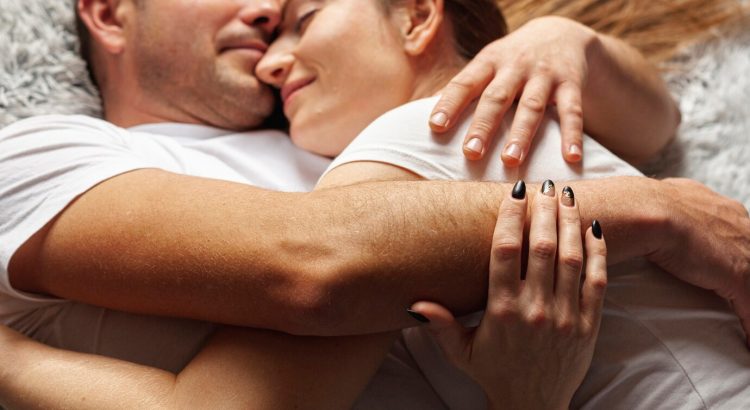Erotic desire is something that everyone has to a greater or lesser extent. However, although it may seem unbelievable, not only do people experience it at different levels, but it is also different for each individual. To demonstrate this, we will talk about erotic desire in men and women, showing that it is more different than one might think. This is because each gender seeks different things, which is why the concept itself also varies.
What is erotic desire?
We can define erotic desire as a combination of emotions, thoughts, and wishes that transcend the physical, forming an essential part of sexuality. Erotic desire includes fantasies, attraction, and the need for intimate connection, which can be expressed in many diverse ways depending on each person.
In men, this drive is often tied to visual and sensory stimuli, while in many women, it is connected to emotional intensity and the context surrounding the interaction. However, these characteristics are not absolute, as each individual may experience and express their desire in unique ways. These differences in how longing is experienced enrich the perspective on sexuality, showing that it is a deeply personal and varied realm. Understanding this diversity is key to exploring desire as a phenomenon that connects body and mind in a unique experience.
How is erotic desire in men?
What men seek is rooted in different aspects of their nature. For them, visual and tactile stimuli are essential. Certain details such as how someone moves, gestures, or even their choice of clothing can quickly ignite their interest, triggering almost immediate attraction based on instinctive reactions.
On the other hand, the need to explore the unknown and break free from routine also plays a significant role. Experimenting with new things, trying novel ideas, or experiencing moments in unexpected places excites them and fosters a more vibrant and enriching connection.
Similarly, feeling like an object of attention and desire holds great significance. While they often take the initiative in intimate approaches, they also enjoy receiving gestures that affirm what they mean to the other person. A suggestive comment, a bold expression, or a spontaneous display of affection strengthens their confidence.
Finally, physical interaction is one of their favorite ways to convey emotions. Kisses, close contact, or simply enjoying proximity allow them to not only fulfill a physical need but also build a deeper and more meaningful connection. Through this tangible bond, they find a space where they feel important and truly understood.
How is erotic desire in women?

What women truly long for is often deeply linked to emotional and sensory aspects that go beyond the physical. For many, desire arises when they feel understood and appreciated in their most intimate essence. It’s not about grand gestures but rather the connection that forms in small moments: a sincere glance, listening attentively, or showing genuine interest in what they feel and think.
The environment plays a crucial role, as serene and warm places can foster a greater willingness toward closeness. Spaces free from daily tensions allow for letting go of worries and making room for the possibility of sharing meaningful moments. Creating a comfortable and safe atmosphere is just as important as the emotional connection itself.
Moreover, the senses also have a considerable impact on awakening desire. A gentle caress, the scent of a perfume that evokes memories, or words that evoke emotion can be incredibly suggestive. Every detail adds up, making the experience richer and deeper.
Finally, the freedom to imagine also holds crucial value. The fantasies women build are often tinged with emotional nuances, adding a unique richness to their imagination. These internal images represent a window into desires and sensations that go far beyond what can be perceived in the tangible world.
Why is it different according to gender?
Sexual desire is influenced by biological factors that shape it differently in men and women. In men, testosterone acts as a catalyst, creating a quicker impulse toward desire. For women, in contrast, slower stimuli tend to be more effective due to the influence of oxytocin, a chemical that fosters feelings of closeness and emotional bonding.
On a societal level, cultural conditioning has played a significant role. For a long time, men have been portrayed as the initiators of intimate interaction, while women have been taught greater moderation in expressing their sexual appetites. Although these perceptions are evolving over time, they still affect how each gender approaches and experiences sexuality, showing that biology and society are intertwined in the erotic experience.
Tips for enhancing erotic desire in a couple
Enhancing desire in a couple requires breaking free from monotony and seeking novel experiences that stimulate the connection. Trying different activities or venturing into new ways of expressing intimacy can revitalize attraction. Paying attention to the partner’s signals, both in what they say and in their body language, is key to understanding their desires and needs. Setting aside exclusive moments to be together, without distractions, promotes emotional and physical closeness.
Opening up to experimenting with new ideas or sharing fantasies requires a trusting environment where both feel comfortable and secure. Lastly, taking care of one’s self-esteem is essential to fully enjoy the relationship. Adopting healthy routines, exercising, or dedicating time to personal care are effective ways to strengthen individual security, positively impacting the quality of the shared intimacy.

